Assessment |
Biopsychology |
Comparative |
Cognitive |
Developmental |
Language |
Individual differences |
Personality |
Philosophy |
Social |
Methods |
Statistics |
Clinical |
Educational |
Industrial |
Professional items |
World psychology |
Social psychology: Altruism · Attribution · Attitudes · Conformity · Discrimination · Groups · Interpersonal relations · Obedience · Prejudice · Norms · Perception · Index · Outline
The Stanford prison experiment was a landmark psychological study of the human response to captivity, in particular, to the real world circumstances of prison life. It was conducted in 1971 by a team of researchers led by Philip Zimbardo of Stanford University. Volunteers played the roles of guards and prisoners and lived in a mock prison. However, the experiment quickly got out of hand and was ended early.
Ethical concerns surrounding the Stanford prison experiment often draw comparisons to the Milgram experiment, which was conducted in 1963 at Yale University by Stanley Milgram, Zimbardo's former high school friend.
Goals and methods[]
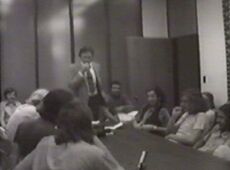
Zimbardo (standing, center) at the orientation meeting
The study was funded by the US Navy to explain conflict in its and the Marine Corps' prison systems. Zimbardo and his team intended to test the hypothesis that prison guards and convicts were self-selecting, of a certain disposition that would naturally lead to poor conditions in that situation.
Participants were recruited via a newspaper ad and offered $15 a day ($76 adjusted for inflation in 2006) to participate in a two-week "prison simulation." Of the 70 respondents, Zimbardo and his team selected 24 whom they deemed to be the most psychologically stable and healthy. These participants were predominantly white, middle-class young males. Some were students.
The group was divided in half at random into an equal group of "prisoners" and "guards". Interestingly, prisoners later said they thought the guards had been chosen for their larger physical size, but in reality they had been picked by a fair coin toss and there was no objective difference in stature between the two groups.
The prison itself was run out of the basement of the Stanford Psychology Department, which had been converted into a mock jail. An undergraduate research assistant was the "warden" and Zimbardo the "superintendent".
Zimbardo set up a number of specific conditions on the participants which he hoped would promote disorientation, depersonalization and deindividuation.
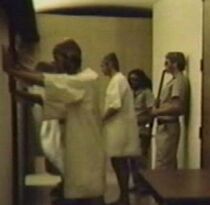
Image showing dress of prisoners and guards
Guards were given wooden batons and a khaki, military-style uniform they had chosen themselves at a local military surplus store. They were also given mirrored sunglasses to prevent eye contact (Zimbardo said he got the idea from the movie Cool Hand Luke). Unlike the prisoners, the guards were to work in shifts and return home during off hours, though at times many would later volunteer for added duty without additional pay.
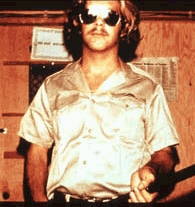
Image detailing guards' uniform
Prisoners were to wear only intentionally ill-fitting muslin smocks (without underwear) and rubber thong sandals, which Zimbardo said would force them to adopt "unfamiliar body postures" and discomfort in the interest of their disorientation. They were referred to by assigned numbers instead of by name. These numbers were sewn onto their uniforms, and the prisoners were required to wear tight-fitting nylon pantyhose caps to simulate shaven heads similar to those of military basic training. In addition, they wore a small chain around their ankles as a "constant reminder" of their imprisonment and oppression.
The day before the experiment, guards attended a brief orientation meeting, but were given no formal guidelines, other than that no physical violence was permitted. They were told it was their responsibility to run the prison, which they could do in any way they wished.
Zimbardo provided the following statements to the "guards" in the briefing:
You can create in the prisoners' feelings of boredom, a sense of fear to some degree, you can create a notion of arbitrariness that their life is totally controlled by use, by the system, you, me, and they'll have no privacy… We're going to take away their individuality in various ways. In general what all this leads to is a sense of powerlessness. That is, in this situation we'll have all the power and they'll have none. — The Stanford Prison Study video, quoted in Haslam & Reicher, 2003.
The participants who had been chosen to play the part of prisoners were told simply to wait in their homes to be "called on" on the day the experiment began. Without any other warning, they were "charged" with armed robbery and arrested by the actual Palo Alto police department, who cooperated in this part of the experiment.
The prisoners were put through a full booking procedure by the police, including fingerprinting and having their mug shots taken, and were informed of their Miranda rights. They were transported to the mock prison where they were strip-searched, "deloused" and given their new identities.
Results[]
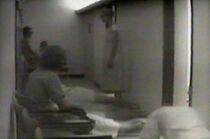
Guards force prisoners to do push-ups, while another (standing) is made to sing.
The experiment very quickly got out of hand. Prisoners suffered — and accepted — sadistic and humiliating treatment at the hands of the guards, and by the end many showed severe emotional disturbance.
After a relatively uneventful first day, a riot broke out on day two. Guards volunteered extra hours and worked together to break up the revolt, without supervision from the research staff. After this point, the guards tried to divide the prisoners and pit them against each other by setting up a "good" cell block and a "bad" cell block, to make the prisoners think that there were "informers" amidst their ranks. The efforts were largely effective, and there were no further large-scale rebellions. According to Zimbardo's former convict consultants, the tactic was similar to those used successfully in real US prisons.
Prisoner "counts", which had initially been devised to help prisoners get acquainted with their identity numbers, devolved into hours-long ordeals, in which guards tormented the prisoners and imposed physical punishments including long bouts of forced exercise.
The prison quickly became unsanitary and inhospitable. Bathroom rights became privileges which could be, and frequently were, denied. Some prisoners were made to clean toilets using their bare hands. Mattresses were removed from the "bad" cell, and prisoners were forced to sleep on the concrete floor without clothing. Food was also frequently denied as a means of punishment. Prisoners endured forced nudity and even homosexual acts of humiliation.
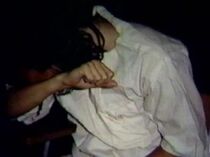
Zimbardo said prisoners reacted in one of three ways: either by actively resisting, by breaking down as in the above image, or by becoming zealously obedient "model prisoners".
Zimbardo himself has cited his own increasing absorption in the experiment, in which he actively participated and guided. On the fourth day, he and the guards reacted to a rumor of an escape plot by attempting to move the entire experiment to a real, unused cell block at the local police department because it was more "secure". The police department refused him, citing insurance concerns, and Zimbardo recalls being angry and disgusted at the lack of cooperation between his and the police's correctional facilities.
As the experiment proceeded, several of the guards became progressively more sadistic — particularly at night, when they thought the cameras were off. Experimenters said approximately one-third of the guards exhibited "genuine" sadistic tendencies. Most of the guards were upset when the experiment was cut off early.
One point that Zimbardo used to argue that the participants internalized their roles, was that when offered "parole" in exchange for forfeiture of all of their pay, most prisoners accepted the deal. Then, when their parole was nonetheless "rejected", none left the experiment. Zimbardo argues that there was no reason for them to continue participating if they would have given up the material compensation in order to leave.
Prisoners began to show severe acute emotional disturbances. One prisoner developed a psychosomatic rash all over his body upon finding out that his "parole" had been turned down (Zimbardo turned him down because he thought he was merely trying to "con" his way out of the prison by faking illness). Uncontrollable crying and disorganized thinking were common among the prisoners. Two of the prisoners suffered such severe trauma that they were removed from the experiment early and replaced.
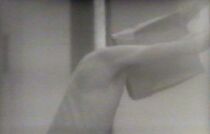
Prisoner 416
One of the replacement prisoners, Prisoner #416, was horrified at the guards' treatment and went on a hunger strike in protest. He was forced into solitary confinement in a small closet for three hours, and the other prisoners saw him as a troublemaker. To exploit this feeling, the guards offered the other prisoners a choice: Either the prisoners could give up their blankets, or #416 would be kept in solitary confinement overnight. The other prisoners chose to keep their blankets. Later Zimbardo intervened and had #416 returned to his cell.
Finally, Zimbardo decided to terminate the experiment early. Christina Maslach, a researcher previously unfamiliar with the experiment who had been brought in to conduct interviews, objected to the appalling conditions of the "prison". She is currently married to Zimbardo, and was having a relationship with him at the time of the experiment. Zimbardo has noted that of the over fifty outsiders who had seen the prison, she was the only one who ever questioned its morality. After only six days of the planned two weeks, the experiment was shut down.
Conclusions[]
The experiment's result has been argued to demonstrate the impressionability and obedience of people when provided with a legitimizing ideology and social and institutional support. It is also used to illustrate cognitive dissonance theory and the power of authority.
In psychology, the results of the experiment are said to support situational attributions of behavior rather than dispositional attribution. In other words, it seemed to entail that the situation caused the participants' behavior rather than anything inherent in their individual personalities. In this way it is compatible with the results of the also-famous (or infamous) Milgram experiment, in which ordinary people fulfilled orders to administer what appeared to be fatal electric shocks to a confederate of the experimenter.
Coincidentally, shortly after the study had been completed, there were bloody revolts at both the San Quentin and Attica prison facilities, and Zimbardo reported his findings on the experiment to the U.S. House Committee on the Judiciary.
Criticism of the experiment[]
Despite its apparently dramatic effects, the experiment was widely criticized as being unethical and bordering on unscientific. Critics including Erich Fromm challenged how readily the results of the experiment could be generalized.
Because it was a field experiment, it was impossible to keep traditional scientific controls. Zimbardo was not merely a neutral observer, but influenced the direction of the experiment as its "superintendent". Conclusions and observations drawn by the experimenters were largely subjective and anecdotal, and the experiment would be difficult for other researchers to reproduce.
One of the most abused prisoners, #416, and the guard known as "John Wayne", who was one of the most abusive guards, confront each other in an "encounter session" two months later.
Some of the experiment's critics argued that participants based their behavior on how they were expected to behave, or modeled it after stereotypes they already had about the behavior of prisoners and guards. In other words, the participants were merely engaging in role-playing. In response, Zimbardo claimed that even if there was role-playing initially, participants internalized these roles as the experiment continued.
The experiment was also criticized on a basis of ecological validity. Many of the conditions imposed in the experiment were arbitrary and may not have correlated with actual prison conditions, including blindfolding incoming "prisoners", making them wear women's clothing, not allowing them to wear underwear, not allowing them to look out windows and not allowing them to use their names. Zimbardo argued that prison is a confusing and dehumanizing experience and that it was necessary to enact these procedures to put the "prisoners" in the proper frame of mind; however, it is difficult to know how similar the effects were to an actual prison, and the experiment's methods would be difficult to reproduce exactly so that others could test them.
Some said that the study was too deterministic: reports described significant differences in the cruelty of the guards, the worst of whom came to be nicknamed "John Wayne," but others were kinder and often did favors for prisoners. Zimbardo made no attempt to explain or account for these differences.
Lastly, the sample size was very small, with only 24 participants taking place over a relatively short period of time.
Comparisons to Abu Ghraib prisoner abuse[]
The human rights abuses that occurred at the Abu Ghraib prison, under the authority of the American armed forces in the aftermath of the 2003 Iraq war, has been called a real-life example of the Stanford prison experiment. According to Zimbardo, acts of humiliation similar to those that occurred in the Stanford experiment resulted when inadequately trained U.S. soldiers were allocated the role of prison guards. The comparison was widely discussed in the media.
Seymour Hersh challenged this theory in an article in The New Yorker that proposes that Abu Ghraib soldiers were acting under the direct orders of their superiors as part of a top secret Pentagon intelligence-gathering program authorized by Secretary of Defense Donald Rumsfeld. Zimbardo's interpretations have also been called into question by William Saletan in the online magazine Slate.
Popular culture[]
- A 1999 novel by German author Mario Giordano entitled Black Box was inspired by the Stanford experiment.
- A 2001 German film, Das Experiment, based upon the Giordano novel.
- "The Black Box," a play adapted from "Das Experiment," was directed by Dr. Anthony S. Beukas and performed by the Yeshiva College Dramatics Society at Yeshiva University in December 2005.
- The story of the experiment is soon to be filmed by Christopher McQuarrie (Oscar-winning writer of The Usual Suspects) from a script he wrote with Tim Talbott.
- There is a rock band called Stanford Prison Experiment.
See also[]
- The Third Wave, a 1967 recreation of Nazi Germany by high school teacher Ron Jones
- The Wave, a novel by Todd Strasser based on the incident
- The Wave, a short film based on the incident
- Milgram experiment on obedience to authority
- Lord of the Flies, a 1954 novel by William Golding, in which a group of youths degrade into dictatorship
- The House of Stairs, a 1974 novel by William Sleator, in which a group of youths become subordinate to an enforced pattern of behaviour
- Studies that show a relation between nutrition and violent behavior
References[]
- Zimbardo, P. G. (1971). The power and pathology of imprisonment. Congressional Record. (Serial No. 15, 1971-10-25). Hearings before Subcommittee No. 3, of the Committee on the Judiciary, House of Representatives, Ninety-Second Congress, First Session on Corrections, Part II, Prisons, Prison Reform and Prisoner's Rights: California. Washington, DC: U.S. Government Printing Office.
- Haney, C., Banks, W. C., & Zimbardo, P. G. (1973). Study of prisoners and guards in a simulated prison. Naval Research Reviews, 9, 1-17. Washington, DC: Office of Naval Research
- Haney, C., Banks, W. C., & Zimbardo, P. G. (1973). Interpersonal dynamics in a simulated prison. International Journal of Criminology and Penology, 1, 69-97.
- Musen, K. & Zimbardo, P. G. (1991). Quiet rage: The Stanford prison study. Videorecording. Stanford, CA: Psychology Dept., Stanford University.
- Haslam, S. Alexander & Reicher, Stephen (2003). Beyond Stanford: Questioning a role-based explanation of tyranny. Bulletin of the Society for Personality and Social Psychology, 18, 22-25.
External links[]
- Official Site
- Homepage of Philip Zimbardo
- Summary of the experiment
- Fromm's criticism of the experiment
- The Experiment (IMDB) — German movie (Das Experiment) from 2001 inspired by the Stanford Experiment
- The Lie of the Stanford Prison Experiment — Criticism from Carlo Prescott, ex-con and consultant/assistant for the experiment
Abu Ghraib and the experiment:
- BBC News: Is it in anyone to abuse a captive?
- Ronald Hilton: US soldiers' bad behavior and Stanford Prison Experiment
- Slate.com: Situationist Ethics: The Stanford Prison Experiment doesn't explain Abu Ghraib, by William Saletan
| This page uses Creative Commons Licensed content from Wikipedia (view authors). |